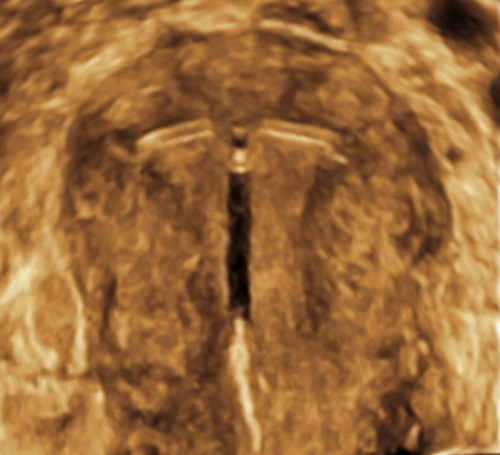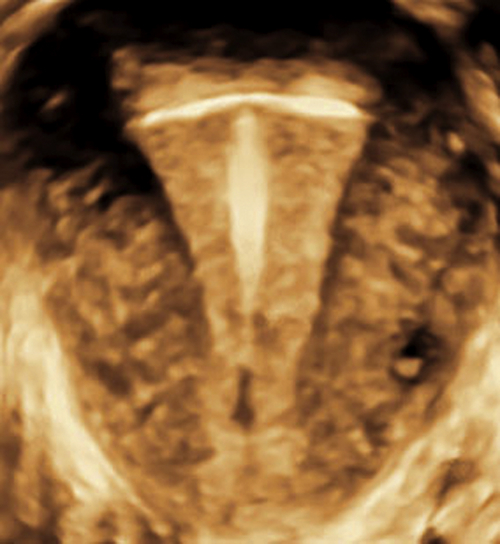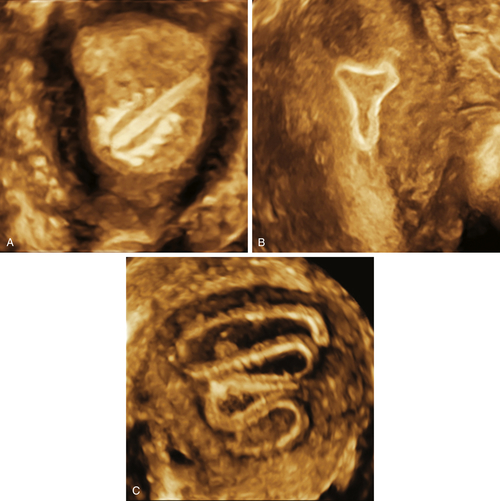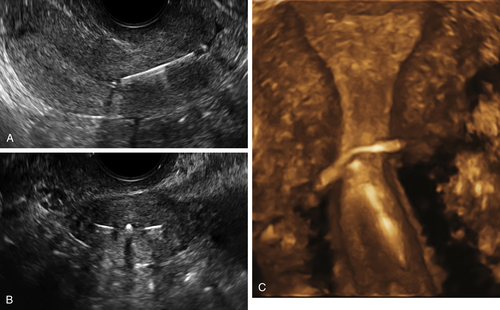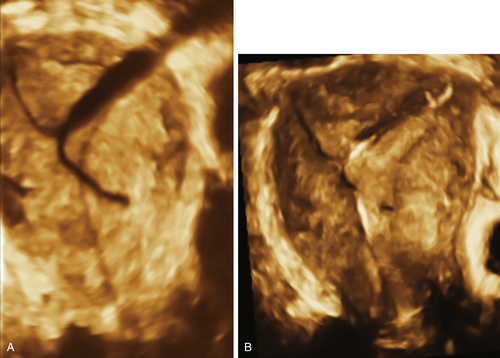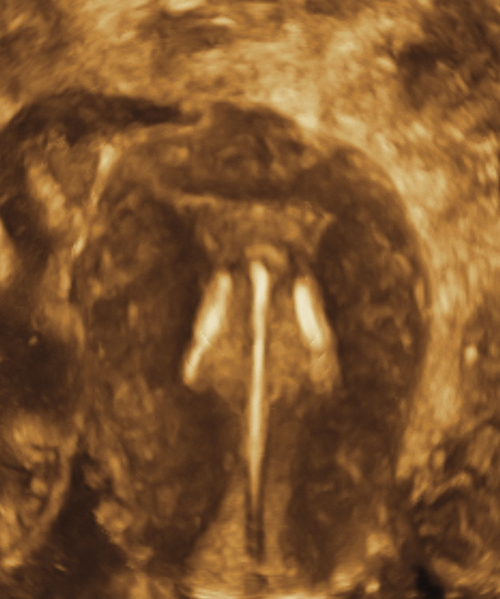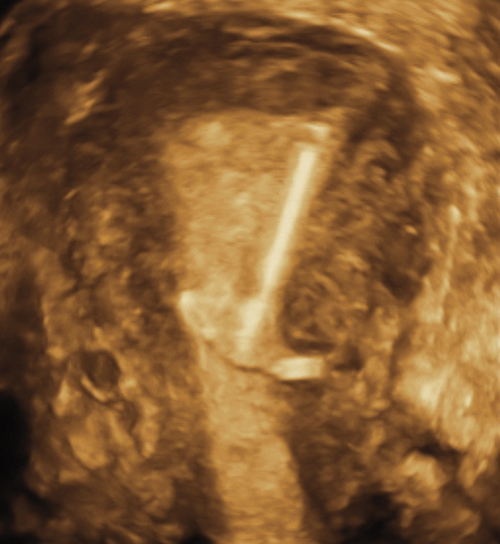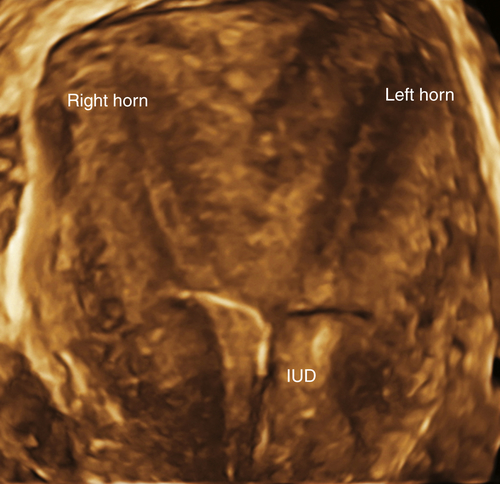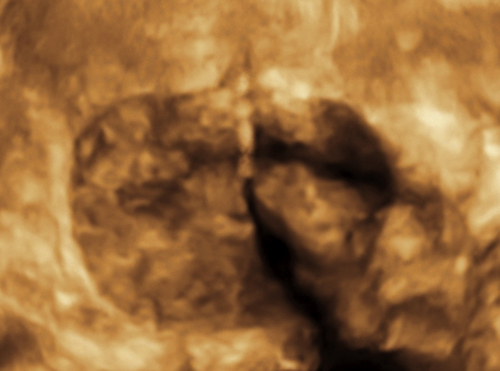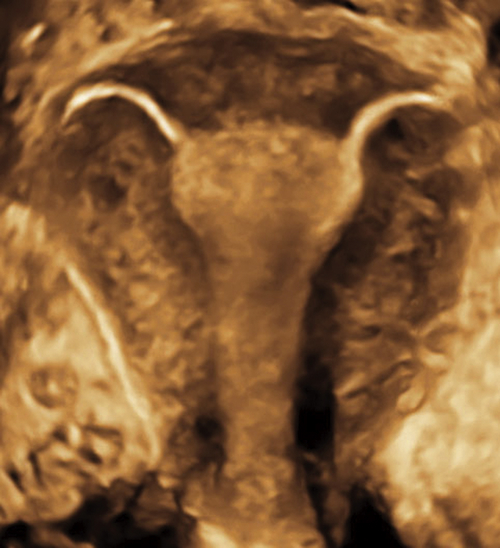Intrauterine Device Location, Abnormal
Synonyms/Description
Etiology
Ultrasound Findings
Differential Diagnosis
Clinical Aspects and Recommendations
Figures
Suggested Reading
Benacerraf B.R., Shipp T.D., Bromley B. 3D ultrasound detection of embedded intrauterine contraceptive devices—a source of pelvic pain and abnormal bleeding. Ultrasound Obstet Gynecol. 2009;34:110–150.
Bonilla-Musoles F., Raga F., Osborne N.G., Blanes J. Control of intrauterine device insertion with three-dimensional ultrasound: is it the future? J Clin Ultrasound. 1996;24:263–267.
Lee A., Eppel W., Sam C., Kratochwil A., Deutinger J., Bernaschek G. Intrauterine device localization by three-dimensional transvaginal sonography. Ultrasound Obstet Gynecol. 1997;10:289–299.
Peri N., Graham D., Levine D. Imaging of intrauterine contraceptive devices. J Ultrasound Med. 2007;26:1389–1401.
Shipp T.D., Bromley B., Benacerraf B.R. The width of the uterine cavity is narrower in patients with an embedded intrauterine device (IUD) compared to a normally positioned IUD. J Ultrasound Med. 2010;29:1453–1456.
Valsky D.V., Cohen S.M., Hochner-Celnikier D., Lev-Sagie A., Yagel S. The shadow of the intrauterine device. J Ultrasound Med. 2006;25:613–616.

